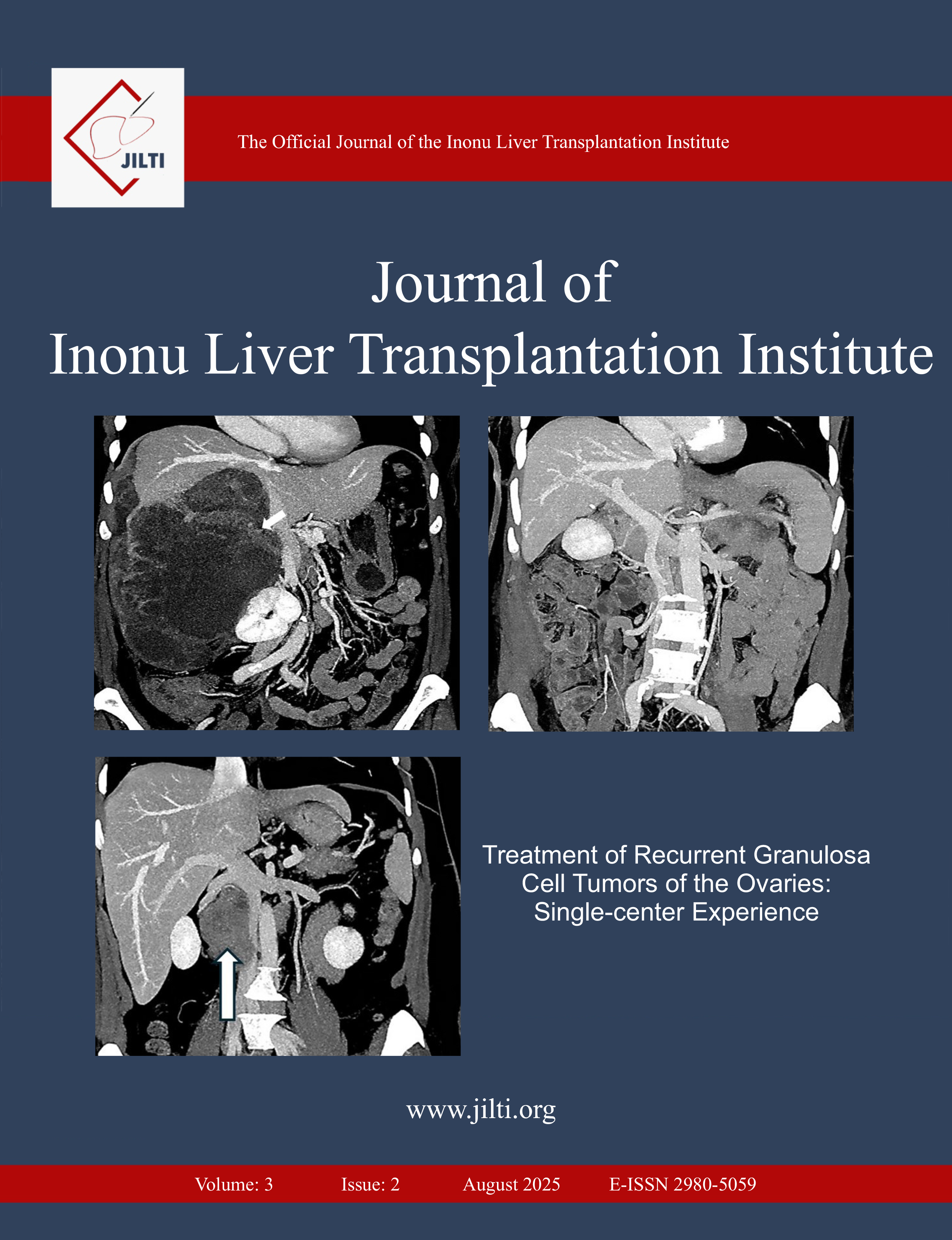Early Results of Hepatitis B Recurrence After Postoperative Close Monitoring of Patients Who Have Undergone Liver Transplantation for Hepatitis B
Deniz Yavuz Baskiran1, Ipek Balikci Cicek2, Murat Harputluoglu3, Sezai Yilmaz11Department of General Surgery and Liver Transplant Institute, Inonu University Faculty of Medicine, Malatya, Türkiye2Department of Biostatistics and Medical Informatics, Faculty of Medicine, Inonu University, Malatya, Türkiye
3Department of Gastroenterology and Hepatology, Inonu University Faculty of Medicine, Malatya, Türkiye
Objectives: Hepatitis B virus (HBV) is a a frequent cause of liver cirrhosis and hepatocellular carcinoma (HCC), that requires liver transplantation. This study aims to analyze HBV recurrence rates in the early postoperative period. Our second goal was to identify contributing factors of HBV recurrence following liver transplantation.
Methods: This retrospective study included 54 patients who underwent liver transplantation for HBV-related liver diseases at Inonu University Liver Transplant Institute in 2024. Data on demographics, preoperative viral markers, postoperative anti-HBs lev-els, and immunoglobulin and antiviral therapy regimens were collected from each patient. Statistical analyses were performed to compare outcomes based on risk stratification and anti-HBs levels.
Results: Fifty-four patients (81.48% male; mean age: 52.13±10.54 years were included in the study. In total 1.9% (n=1) experienced HBV recurrence during the early postoperative period. The mean Model for End-Stage Liver Disease (MELD) score was 18.46±6.15, and HBV DNA was negative in 81.48% of patients in the pretransplant period. Anti-HBs titers exceeded 100 IU/L in 79.63% of patients on postoperative day 7. There were no notable differences in demographic or clinical variables between patients with anti-HBs titers exceeding 100 IU/L and those with levels below this threshold.
Conclusion: The combination of hepatitis B immunoglobulin (HBIG) and antiviral therapy effectively prevents HBV recurrence following liver transplantation. Maintaining anti-HBs titers above 100 IU/L is critical. Further studies are needed to optimize prophylactic strategies to improve the outcomes in patients transplanted for HBV-related liver disease.
Manuscript Language: English



